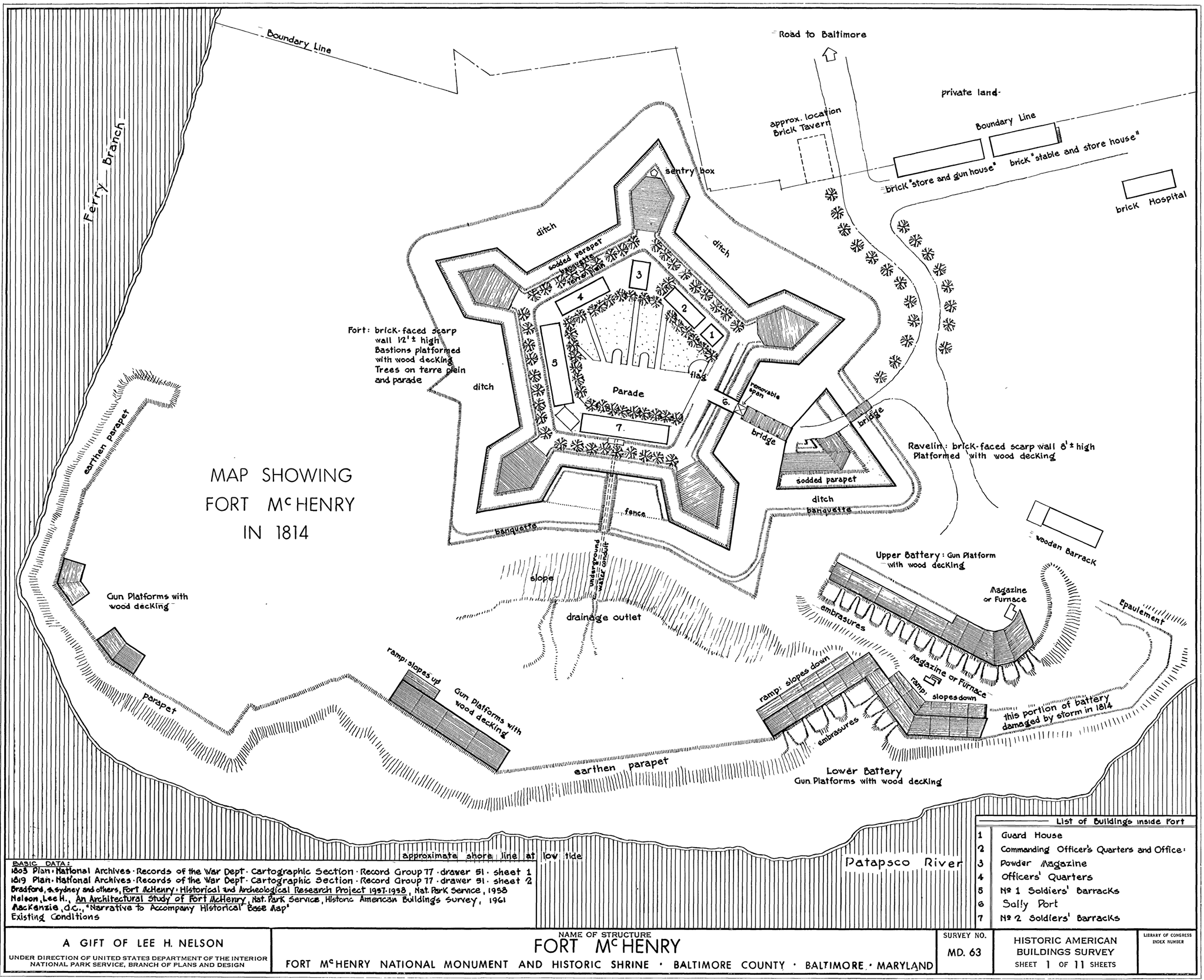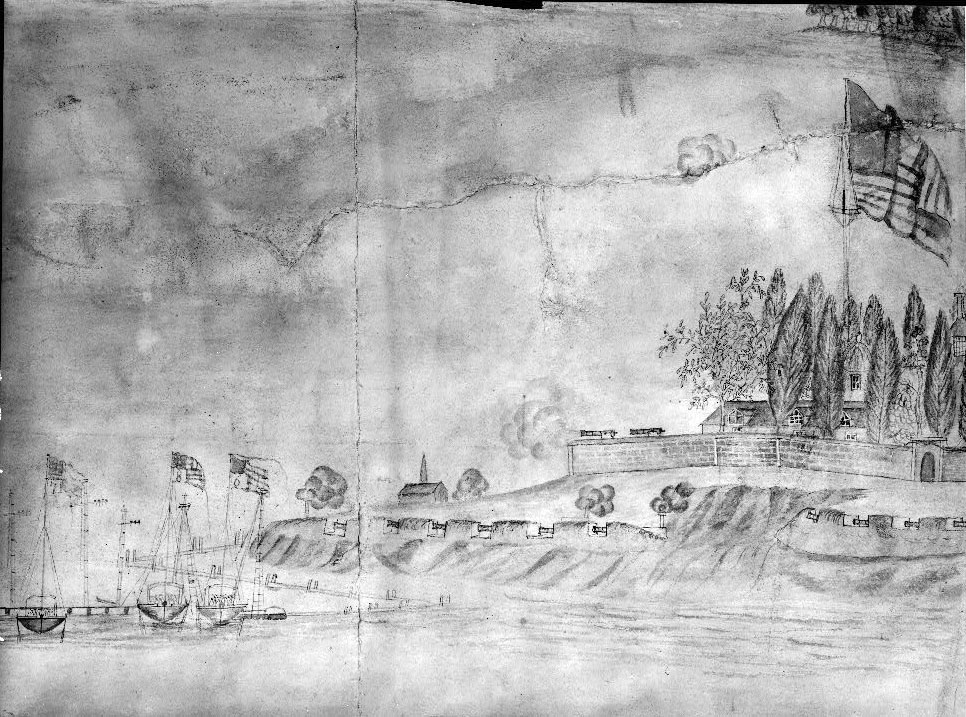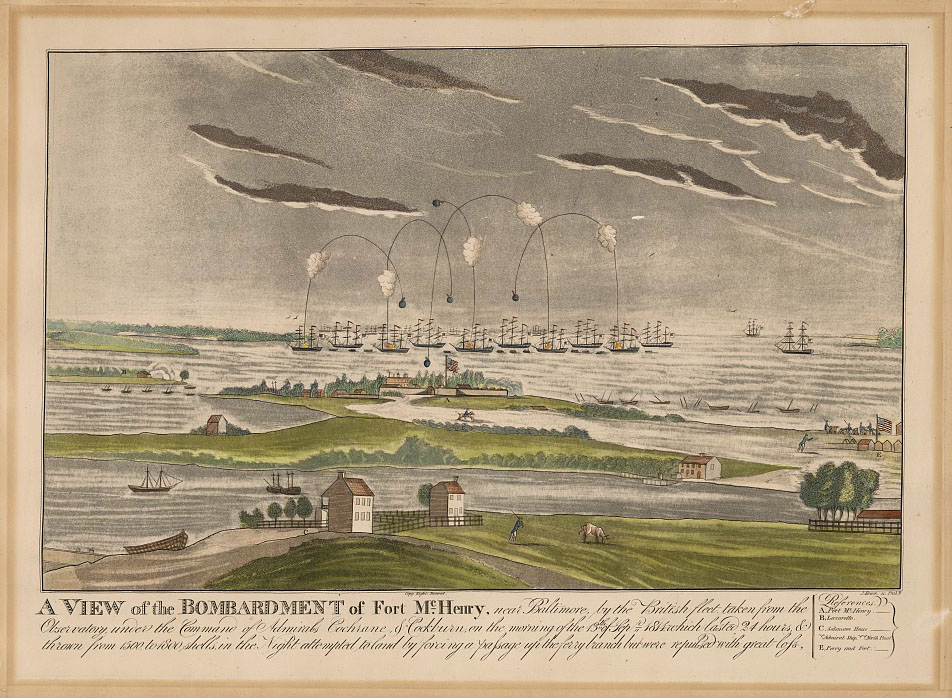 |
Fort McHenry National Monument
and Historic Shrine |
 |
| Anonymous watercolor of the 1814 bombardment |
By the summer of 1814, the United States had been at war with Great Britain for over two years. The U.S., a young country but a proud one with expansionist ideas, had tired of Britain’s continuing interference, particularly in international trade, and Congress had declared war in June 1812. The U.S. had scored some early military successes while Britain was preoccupied with its much larger war against France in Europe, but Napoleon’s defeat in 1814 freed British forces to face their American foe.
Although the city of Washington was by then the capital, it had only around 8,000 residents and held no strategic significance, especially compared to nearby Baltimore, a thriving port city with a population approaching 50,000. Baltimore residents were certain their city would be a target of the British, and they worked for months to shore up the city’s defenses, notably Fort McHenry.
During the Revolutionary War, Maryland had erected Fort Whetstone on the peninsula that jutted into Baltimore’s harbor, and it likely deterred the British Navy from striking the city then. After the war, tensions with Britain simmered, and the state granted the federal government permission to build a new fortification on the site. In 1794 Congress appropriated $4,225.44 to erect a 20-gun battery, and the secretary of war directed John Jacob Ulrich Rivardi, an artilleryman and military engineer, to plan the harbor defenses. The star-shaped bastion made of earth and masonry was constructed between 1798 and 1800 and was named for James McHenry, a signer of the Constitution and a secretary of war.
In August 1814, British forces in the Chesapeake Bay moved on the capital. After occupying and burning Washington, they returned to their vessels with their eyes now fixed on Baltimore. They planned to take the city from the east with a combined land and sea assault. On September 12, the British landed 4,000 troops at North Point to march west on Baltimore. These men met a strong defense, however, and paused to wait for their Navy to take the harbor. Sixteen British warships arrived on the 13th, stopped just out of range of Fort McHenry’s 36-pound cannon, and began bombarding the fort, an assault that lasted into the next day. Although accuracy suffered at such a distance, British guns did damage two buildings in the fort and inflicted a few casualties. But with their bombs making little meaningful impact on the fort, and after landing forces in small boats were also repulsed, the British conceded defeat and withdrew.
 |
|
![Flag that flew over Fort McHenry [in 1814], displayed horizontally in a room surrounded by cases, 4 June 1914. Flag that flew over Fort McHenry [in 1814], displayed horizontally in a room surrounded by cases, 4 June 1914.](/portals/2/docs/history/History%20Images/140908-A-DS407-004.JPG) |
| View of the bombardment of Fort McHenry, near Baltimore, by the British fleet ... |
|
Flag that floated over Fort McHenry |
One of the witnesses of the attack on Fort McHenry was Francis Scott Key. He watched the bombardment during the day and overnight until dawn. As the sun broke through the morning mist, Key saw that the American flag remained flying over Fort McHenry, a sight that inspired him to rework the notes he had taken during the ordeal into a poem titled “The Star-Spangled Banner.” By February 1815, both Great Britain and the U.S. had ratified a peace treaty, officially ending the War of 1812.
From 1836 to 1839 the Corps of Engineers repaired and renovated Fort McHenry. Over the next ninety years, the fort served various military functions—infantry garrison, prisoner of war camp, training facility, and hospital. Today Fort McHenry still stands at the edge of Baltimore Harbor, a National Monument and Historic Shrine under supervision of the National Park Service.
All photos courtesy of Library of Congress: HABS MD,4-BALT,5- (sheet 1 of 11); HABS MD,4-BALT,5—18; LC-DIG-ppmsca-35544; LC-DIG-npcc-19638.
* * *
11 September 2014